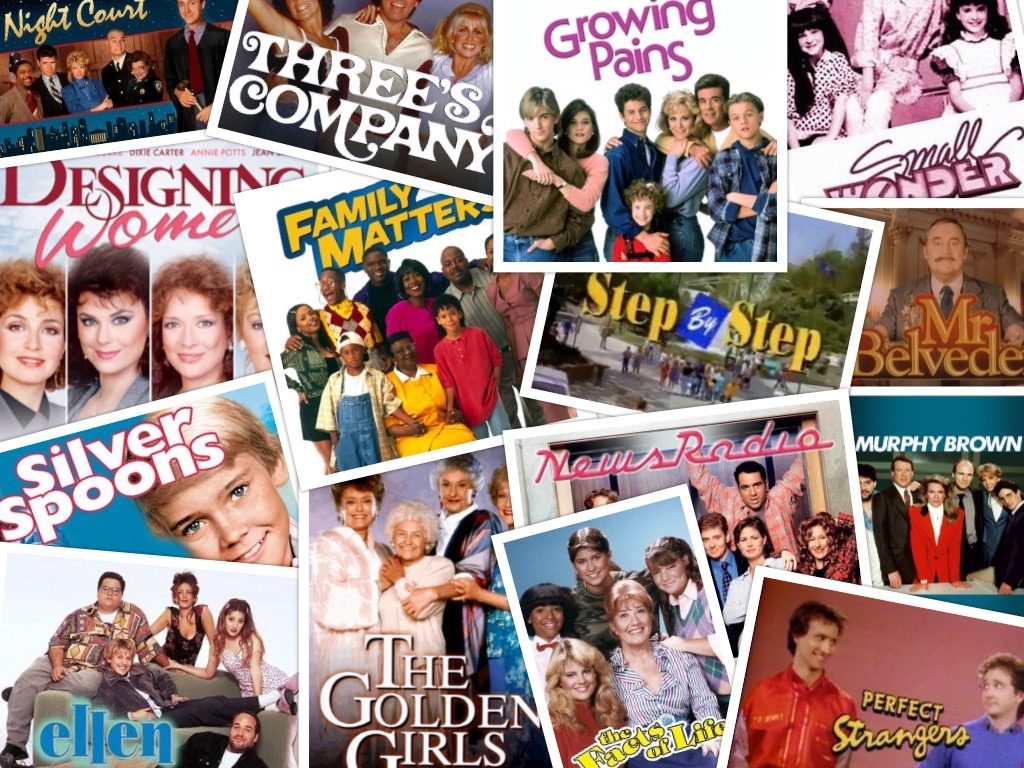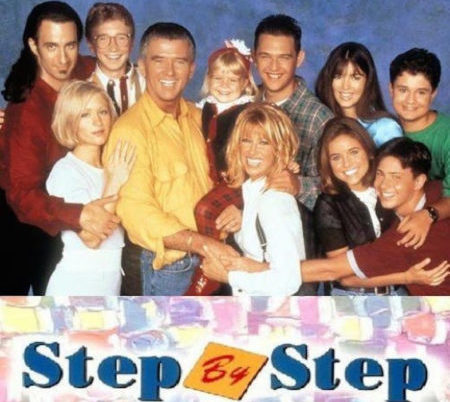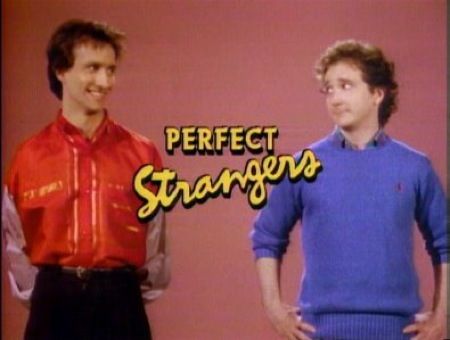THE SITCOM REWIND
A NOSTALGIC LOOK BACK TO THE SITCOMS OF A GENERATION
Welcome to The Sitcom Rewind – where we peel back the layers of both fondly remembered, and mysteriously forgotten, sitcoms. History has been (too) kind to many shows that seem to have eternal life in the cultural zeitgeist. Others have vanished into the ether for various reasons; reduced to wispy vague memories that barely register even when presented with a show title or a theme song.
For me, the sitcom has always been the perfect tonic for when you just don’t have the energy to commit to the grind of a two hour movie. Generally light, fluffy and funny, sitcoms are the thirty minute (22 if you’re streaming) respite from a busy and hectic life. Filled with zany antics and hijinks based around family, friends and co-workers, we watch mostly to laugh, but also to learn glib moral lessons from Very Special Episodes when the characters have to deal with Very Serious Topics.
However, if you like to do deep dives into things from the past it’s shockingly hard to find comprehensive places to find out more about all the hidden, and even not hidden, gems from the past. There’s the standard Wikipedia and IMDb of course, along with the occasional archived fan sites. But the Wiki pages across different shows vary widely. Some are encyclopedic, others are barely there.
Born out of my quest to know more tidbits and salacious details about the shows I grew up with, and also to see how my golden memories line up with the reality of the shows themselves, I started the Sitcom Rewind series. We’ll see that many are problematic as seen through today’s cultural lens. Others are simply not that funny. And the cringe factor? That’s through the roof. Scraped together from all corners of the internet, including many many hours watching sketchy clips on Youtube, let’s take a look back at the shows that made the 80s and 90s great.
Across the series we’ll discover:
- How the shows came about and why
- Who was in them
- How they are remembered
- Why they are forgotten
- Why we liked them
- Why we hated them
- Random oddball characters
- If the music was any good
- If they have a place in history
From Full House to Small Wonder, The Facts Of Life to Webster, Cheers to Charles In Charge to Parker Lewis Can’t Lose, let’s see what it took to make 22 minutes of TV magic, or garbage, in The Sitcom Rewind.
THE SHOWS: SERIES 1
THREE'S COMPANY
It’s old, it’s corny, it’s certainly problematic, but it’s one of the closest examples of having a classic French farce ever show up on television screens – Three’s Company. An American remake of the britcom Man About The House, it is hardly a forgotten entity with a classic theme song and a trademark willingness to tackle the most absurd of wacky situations. Plus having people get bonked on the head on a weekly basis is a delightful added bonus.
This was not hard hitting, groundbreaking television history in the making. Buffoonary, slapstick, and miscommunications abound with its lack of making its audience better people written proudly on its sleeve. Infamous for its behind the scenes drama centering on Suzanne Somers which culminated in a very personal firing, but not before it had escalated to the point of her filming small scenes speaking into the telephone prior to any other cast members arriving for the day.
However! We have more pressing matters than Suzanne’s troubles (ok maybe we don’t), but in any case, let’s go knock on their door and take a dive into Three’s Company.
WHY WE LIKE IT
- Because it’s inherently stupid. There are no lessons to be learned. There is no brain power required to enjoy it. When things get heavy the situation is sorted in sometimes less than a minute.
- Because watching Jack fall down behind, on top of, off the side of the couch is always funny.
- There’s muumuus.
PERFECT STRANGERS
One of those shows that somehow feels older than it is. Yet it aired well into the Seinfeld years and bowed out just 13 months before Friends made its debut. Let’s get reacquainted with Larry and Balki and talk about Perfect Strangers.
Probably because it was born out of the ridiculously massive Miller-Boyett 80s production house with it’s iconic yellow show titles, it feels dated just by saying the name of the show. Or perhaps it’s because it’s one of the last character driven slapstick shows to come out at at time when issue driven sitcoms were taking over full time.
Indeed both stars Mark Linn-Baker and Bronson Pinchot likened it to a throwback to the format of The Honeymooners and I Love Lucy. I can picture Balki making a commercial for Vitameatavegamin can’t you? Or Larry and Balki working at the candy factory alongside Lucy and Ethel? With a main cast that genuinely liked each other, and aside from the network playing the time slot hokey pokey, if you’re looking for salacious behind the scenes details about this slightly forgotten Chicago based classic you will be disappointed.
However, our boat from Mypos has arrived and it’s taking us to Chicago to find out just what made Perfect Strangers tick.
WHY WE LIKE IT
- Because it was funny, light-hearted and actually nice. The scenarios were goofy and would only tread lightly into Very Serious territory.
- We get to see food fights with baking ingredients, Balki counting raisins in a cereal box and the classic Miller-Boyett Let’s All Make Up In The Last Two Minutes trope.
- There’s a stuffed sheep named Dimitri.
DESIGNING WOMEN
On the list of Signs You May Be Gay is when younger you squirrels away in the basement to pass the time by watching re-runs of that old southern-set chestnut, Designing Women. While recently brought back (somewhat) into public consciousness with its addition to Hulu, back when it was airing you couldn’t go ten feet without seeing a tabloid with something about Delta Burke on the cover.
The show itself, while very popular, was never a true massive hit until its second to last season. But the drama emanating from the cast of the show? Now that was a hit.
Less a sitcom than what I call a topcom, this was a heavily topically driven show. The situations presented and which the characters found themselves in were a function of the topics being addressed each episode. Don’t get me wrong, it certainly was funny, with the entire cast that surrounded Dixie Carter providing the comic relief to Carter’s stoic matron-ship of Sugarbaker & Associates.
But more often than not there were Very Serious Issues to be plugged away at which could take away from the Ha-Ha funniness of the show. What is interesting is how many of the issues are so damn relevant some thirty years later.
Let’s take a trip inside the design firm that never seemed to design anything and see just what was under the hood of that big haired dishy delight, Designing Women.
STEP BY STEP
The classic 90s family sitcom that never made it into history as the classic 90s family sitcom. A not-even-bothered-to-be-veiled rehash of The Brady Bunch, Step By Step has been left behind in the TV nostalgia sweepstakes yet has a surprising amount of history and trivia behind it.
It existed partly to fulfill contractual obligations to Patrick Duffy and to cash in on the popularity of both two 70s stars (fifteen years later? Sure why not), and teen stars of the day. Covering all the family sitcoms tropes with massive big checkmarks, Step By Step was a fairly standard, light-hearted and innocent affair served up with a side dish of sexual creepiness. Heavy on the hijinks, it still had the requisite amount of Very Serious Topics and a creepily odd amount of predatory teenaged boys.
Its hallmark, at least for the first half of its run was the, frankly quite cruel, animosity between the older step-siblings, while giving the younger siblings a pretty short shrift script-wise. So much so that one of the younger kids just up and quit acting, never to be seen again.
Which leads into another characteristic of this show – disappearing characters. Every long running show will have to deal with actors coming and going on different whims but Step By Step was the king of abandonment issues. Sisters, mothers, friends, co-workers, their own children, parking lots, theme music, even the letter “i.” Just dropped like dead flies never to be mentioned or seen again.
To sort this all out let’s step into the way way back machine and see if Step By Step is any good the second time around.

WHY WE LIKE IT
- Because it’s ridiculously easy to watch.
- Because if The Brady Bunch wasn’t available or too outdated for you this was a reasonable facsimile.
- Because every show is better when one of the characters lives in a van in the driveway.
NIGHT COURT
Absolutely absurd, completely ridiculous and featuring a cast of hundreds, or at least it felt that way, the world of Night Court really had no equal in the television universe.
Surrounded by shows that shovelled the moral lessons at you by the dump truck load – here’s looking at you Cosby Show and Family Ties – Night Court had no interest in making us better people by pandering to us. Instead, it made us better people by trying as hard as it could, episode after episode, to make us laugh in any way possible.
With a setting and premise that allowed the writers to bring literally anything and anyone into the courtroom, it is very nearly untouchable in terms of the range of characters that came through Harry’s court on the 18th floor of the City Courts Building in New York. And this includes a roaming box of sex toys that yes, is portrayed as an actual character in one episode.
And while the entire premise of the show being centred on a 34 year old judge seems impossible, it was loosely based on true events in Los Angeles where angry outgoing mayor Sam Yorty filled all of the district’s judicial openings with unqualified people simply to annoy victorious candidate Tom Bradley. That’s petty as all hell and is the perfect seed for a show that revelled in its pettiness.
It’s hard to remember any significant parts of the show today because there were very few major story arcs. This was a show whose comedy and plot points was mostly driven by the individuals brought into court, leading to an extraordinary amount of self contained episodes.
In fact, the writers should be given extra credit for coming up with the hundreds of bizarre cases and the equally bizarre defendants that came with them.
A show about weirdos, for weirdos and if you, like I, felt a certain sense of belonging and kinship while court was in session you’ll surely enjoy rewinding back to see just how wild Night Court could be.

WHY WE LIKE IT
- Because it was weeeeeeeird.
- At times it was more of a sketch show built around the players in the court room.
- It provided a welcome respite from the saccharine offerings from the networks at the time.
- Read: no Very Serious Topics, or at least very few.



